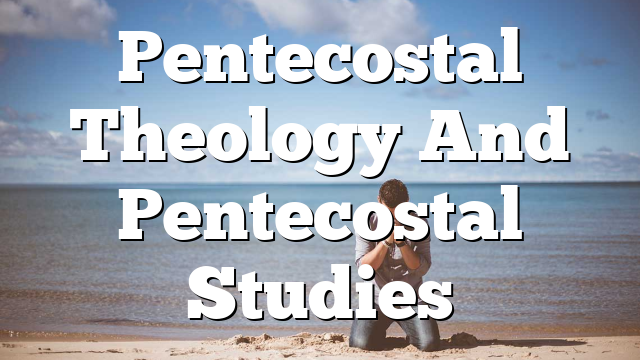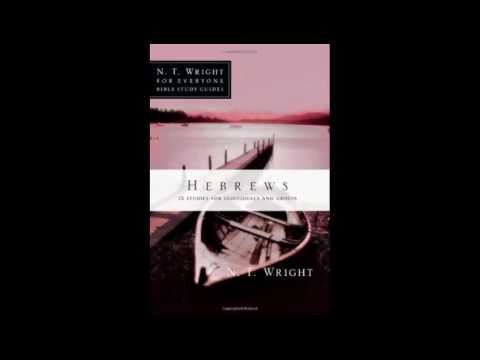Click to join the conversation with over 500,000 Pentecostal believers and scholars
Click to get our FREE MOBILE APP and stay connected
| PentecostalTheology.com



PNEUMA 36 (2014) 179–181
Pentecostal Theology and Pentecostal Theology
A Symbiotic Relationship
Amos Yong
One of the joys of (co)editing Pneuma is that I get to work at the vanguard of Pentecostal Theology as an interdisciplinary field of inquiry. The breadth of inter- est groups that constitutes the annual meeting of the Society for Pentecostal Theology (sps) feeds, at least in part, the scope of material published in this jour- nal. As a systematic theologian trained professionally in a graduate program (Boston University’s School of Theology in the mid-1990s) that emphasized interdisciplinary, intercultural, and interfaith approaches, I have long appreci- ated theological work explicated in these ways as well as efforts in these latter areas that have engaged with theology as an equal dialogue partner.
It is in part for this reason that I am thrilled with this issue of Pneuma. It has a substantial core of theological articles, but each of them is either situated in or invites interdisciplinary considerations. Michael Wilkinson and Peter Althouse, and Shane Clifton, Joshua Reichard, and Christopher (Crip) Stephenson all presume an interdisciplinary conversation in different ways. The coauthors of the first article—Wilkinson and Althouse—are by nature of their sociological and theological craft, respectively, already interdisciplinary: sociological insights are nurtured within a theological frame of reference even as theological commitments are mediated through sociological inquiry. Next, Clifton’s essay brings disability studies into the Pentecostal Theology fold even as he introduces virtue philosophical theory as an intermediary to the discussion, while Joshua Reichard attempts to rethink pentecostal emphases on Spirit empowerment in light of Alfred North Whitehead’s organismic, relational, and scientific cosmology. Then Crip Stephenson brings analytic philosophy and theology into Pentecostal Theology, urging that pentecostal theologians, not to mention laity, can benefit from these exercises.
I am struck on two fronts by this collection. First, these are all unlikely dia- logue partners for Pentecostal Theology. The sociological-theological collabora- tion might be outdone only by an anthropological-theological partnership— the point being that the academic disciplines of sociology and anthropology have been notorious for their atheistic presuppositions at least across the twentieth-century guild. That the sps now includes articles by sociologists (not
© koninklijke brill nv, leiden, 2014 | doi: 10.1163/15700747-03602001
1
180
yong
to mention that Wilkinson is president-elect for the Society!) is indicative not only about the changing fortunes in this discipline, but also that developing currents have opened up Pentecostalism to sociological inquiry and made pos- sible reciprocity between sociology and theology rather than galvanized hos- tility between the two disciplines (as in times past). Similarly, in a prior gen- eration, pentecostal healing praxis and disability realities ran by and large on parallel tracks, with the occasional tangential intersection occurring only when testimonies of miraculous healings made their rounds in the former circles. Yet as Clifton profoundly argues in his article, the scope of pentecostal theol- ogy and the message of pentecostal healing can be considerably expanded if disability were looked at not just as a problem to be cured but as a condition through which divinely gifted well-being can be experienced through the pres- ence of the Holy Spirit.
The two more philosophically-oriented articles also engage what heretofore would have been unlikely conversation partners: process metaphysics and ana- lytic philosophy. The former’s theological appearances have unfolded primarily within spheres thought to be more “liberal” or progressive, certainly among those for whom pentecostal supernaturalism is at best unintelligible or at worst misguided, while the latter has made headway only in what many (pentecostals and otherwise) would consider esoteric and speculative theological domains. In both cases, however, the pay-off is practical: urging a relational missiological posture and approach on the one hand and recommending a meditative and prayerful spirituality on the other hand. This should not be surprising given the pragmatic sensibilities of pentecostal spirituality. Any theology that does not finally have performative implications cannot be said to be authentically pen- tecostal. The irony of these articles is that pentecostal praxis finds itself fueled by philosophical systems that have been ignored or dismissed in previous eras because they were considered non-conducive to the intuitions and commit- ments of the Spirit-filled and Spirit-empowered life.
My second observation returns us to the potency of such interdisciplinary inquiry in pushing forward the field of Pentecostal Theology. Because pentecostal spirituality is both embodied and constituted by the many tongues, languages, and cultures caught up across the field of the Spirit’s global outpouring, vig- orous pentecostal theology cannot but be informed by an inter- and multi- disciplinary methodology. Christian theology in general is only as good as it can receive the scriptural and historical traditions amid contemporary reali- ties, and pentecostal theology in particular will be therefore only as good as it engages with the scriptural horizons amid the complexities of the present world. And if the current shape of world Pentecostalism is as multi-layered and poly-dimensional as described by Todd Johnson (the final article in this issue,
PNEUMA 36 (2014) 179–181
2
pentecostal theology and Pentecostal Theology
181
and interestingly, the only one written by someone who would not self-identify as a pentecostal insider), then so also should pentecostal theology today be methodologically multifaceted. By extension, then, viable theological reflec- tion cannot afford neglecting what other disciplines bring to the discussion table. This issue of Pneuma reveals the richness of pentecostal theology that arises out of such inter- and multi-disciplinary matrices.
Simultaneously, the following pages also intimate that a two-way dialogue is emerging: Pentecostal Theology and pentecostal theology are not just receiving from those in other disciplines but are poised to “talk back” into those arenas, perhaps even enabling next steps in unpredictable ways.1 For instance, Wilkin- son and Althouse’s exploration of the soaking prayer phenomenon highlights how research on benevolence and altruism might gain from paying attention to religious praxis, like that of the Catch the Fire groups that they study. In a very different vein, Reichard’s piece is suggestive for how process philosophy and especially process pneumatology has much to gain from pentecostal beliefs and practices so that the notion of relational empowerment he proffers has genuinely dialogical potential.
Is pentecostal scholarship and pentecostal theology thereby “coming of age” in engaging these wider disciplinary and other currents? I would instead say that we are only now seeing the emergence of a truly multi-lingual—in terms of multi-disciplinary—ferment in Pentecostal Theology, precisely what one would have expected in due course for a movement believed to be founded from out of the pentecostal outpouring of the Spirit on all flesh.2 May the many tongues of pentecostal scholarship continue …
1 See also Wolfgang Vondey, ed., The Holy Spirit and the Christian Life: Historical, Interdisci-
plinary, and Renewal Perspectives, charis: Christianity and Renewal—Interdisciplinary stud-
ies 1 (New York: Palgrave Macmillan, 2014).
2 See Amos Yong, The Spirit of Creation: Divine Action and Modern Science in the Pentecostal-
Charismatic Imagination, Pentecostal Manifestos series (Grand Rapids: William B. Eerdmans
Publishing Company, 2011), chs. 1–2.
PNEUMA 36 (2014) 179–181
3




Most Talked About Today